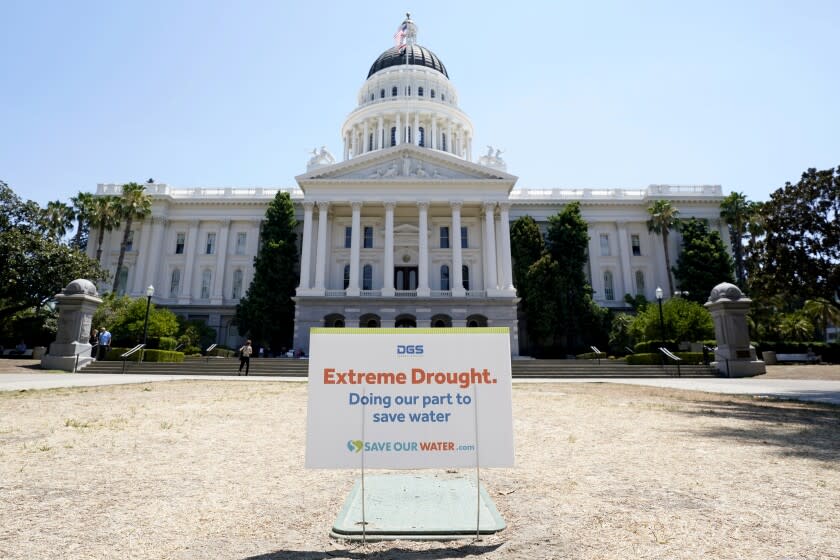Letters to the Editor: On drought, Gov. Newsom ignores the cow in the room

- Oops!Something went wrong.Please try again later.
To the editor: Gov. Gavin Newsom's plan to address the state's water crisis and extreme historic drought won't succeed if it continues to bypass California's biggest water hog — the agriculture industry.
The leading farm uses of water are alfalfa for animal feed and irrigated pasture for livestock. California also produces one-fifth of the nation's dairy, an extremely water-intensive industry that churns out an oversupply of its products.
What California needs is a just transition for farmers to water-smart agriculture (away from thirsty industries like animal agriculture) to bring what we produce and how we produce it in line with sustainable resource and land use.
If Californians want our state to continue as an agricultural and economic leader, this administration has to stop ignoring the cow in the room and giving a free pass to water-hogging industries.
Jennifer Molidor, Cloverdale, Calif.
The writer is senior food campaigner at the Center for Biological Diversity.
..
To the editor: I live just east of Coyote Creek, a typical concrete lined mega-channel, and during rainstorms I am dismayed at the torrent rushing down this "creek" to the ocean.
I propose an inflatable dam (like the ones already in use on the San Gabriel River channel) to store some of the rainwater at the end of Coyote Creek. Adjacent the creek is the Long Beach Water Reclamation Plant, which could filter and clean this captured rainwater.
Yes, this rainwater is from our streets and yards, and the initial burst is full of trash and motor oil, so we can let the dirtier rainwater continue as before to the ocean. But can we capture the cleaner water? This type of water capture from "urban runoff" to potable water is already in use in San Diego's Sweetwater Authority water district.
Jim Howard, Cypress
..
To the editor: Newsom’s reliance on desalination plants is misplaced. Desalination is extremely expensive and environmentally destructive. It should only be used as a last resort.
So long as California residents and farmers cling to our wasteful ways (with lawns, driveway washing and water-intensive crops), we'll never meet our needs from natural sources. Granted, there are a few places (think Catalina Island) that practice intensive conservation and reclamation, where locally available water is still inadequate to meet basic domestic needs. For them desalination may be appropriate.
I live in eastern Ventura County, where lush lawns are the rule and talk of meaningful conservation is only whispered. Achieving real gains in conservation and reclamation requires building consensus and shared sacrifice.
Newsom continues to push the message that we can have it all, and that no one needs to seriously change their behavior. I for one am loath to see our beautiful coastline further fouled by desalination plants.
Andrew Shore, Westlake Village
..
To the editor: Newsom has declared that California is in a major drought and that the state will loose 10% of our water supply soon. In the meantime, our Costal Commission has voted against a desalination plant in Huntington Beach.
Perhaps it's time the governor appoints coastal commissioners who have the same insight he has.
Robert DiPaolo, Los Angeles
This story originally appeared in Los Angeles Times.

